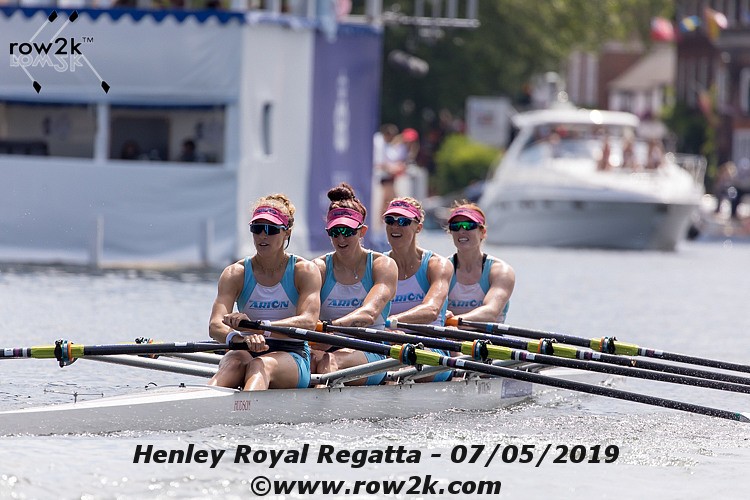
Watch any elite athlete do what they do and they make it look easy. Marathoners who can run 26 miles at a pace I can't hold for one mile, a swimmer gliding through a 200 butterfly, a golfer hitting a ball 300+ yards straight down the fairway. While performing at 100% effort, they're also relaxing the muscles that aren't needed. This ability to relax is an important yet often overlooked skill, particularly in my observation, among adult rowers. My theory is that adults row for exercise and exercise is supposed to be hard so they try to make rowing hard. I want to make it easy.
As you first learn how to row, hopefully you can learn in a supportive, relaxing environment. While you can't always control the water and wind, you can at least start in a boat that isn't too advanced for your level. If you're worried about tipping, you'll have a difficult time relaxing. Find a wide, stable boat that isn't going to pitch you out with the first bad stroke or row in a bigger boat, a quad or eight, while you learn.
Don't make getting the blades off the water your first priority; in fact don't make it a priority at all; it will come with time. Initially it's more important to learn the muscle memory of keeping the hands level, and this can be learned much more easily when allowing the blades to skim across the water. You'll be much more stable with the blades on the water, helping you again to be more relaxed. Of course for the blades to skim on the water, the blades have to be feathered. I've yet to see any new rower and very few rowers of any ability who can row square blades while relaxed.

Another advantage of keeping the blade on the water is that you can relax your grip. The tighter you hold on to the oar, the less you can actually feel what the blade is doing. Oars are so well designed now that the blade really wants to be either squared or feathered. A light grip will allow you to feel the moment when the blade squares or feathers - it literally clicks into position - you'll hear it and if your grip is loose, you'll feel it. Plus, to find the right depth of the blade on the drive, you simply want to unweight the oar handle. Gravity will do the rest of the job.
I always demonstrate how the blade floats in the water. With one blade feathered and one squared, I let go of the oar that is squared. I keep the boat set by keeping the hands level but the blade I've let go will sit with the top of the blade just at the surface of the water. It wants to be there; don't force it to go deep by lifting up on the oar handle, just unweight it.
To be relaxed, you need to be loose. Don't lock the elbows. If the arms are locked, particularly during the recovery, any little imbalance in the boat will be magnified. I saw a demonstration years ago that has stuck with me. While on land, the coach asked a rower to stick out her arm out and to not let him bend it. As he took her hand and tried to bend the arm by moving it around, the rower's whole body moved. Then he told her to relax. Now when he moved her arm, the body was still. The same thing happens in the boat. A loose arm can absorb some imbalance helping the body to stay over the keel, which in turn keeps the boat more stable.

The other image I often use is tug of war. Imagine playing tug of war - you wouldn't lock out your arms, you would just hold on to the rope and lean back against it, allowing the weight of your body to hang from the arms. You know without thinking that a stiff arm would be much less effective.

The same is true in rowing. Not only is it harder to balance with stiff arms, it also brings in to play smaller muscles (like the traps) that make you feel like you're working hard when in reality, you're just working inefficiently. Loose arms will allow you to connect to the lat muscle, a much stronger and more effective muscle to help move the boat.
Learning to relax is a skill, and like any skill needs to be practiced. While we may row for exercise, the goal is to row efficiently. Stay loose and allow yourself to feel how the boat and the oars want to move.
Relax and enjoy!

If you enjoy and rely on row2k, we need your help to be able to keep doing all this. Though row2k sometimes looks like a big, outside-funded operation, it mainly runs on enthusiasm and grit. Help us keep it coming, thank you! Learn more.
Comments | Log in to comment |
There are no Comments yet
| |
- Bont Rowing
- Calm Waters Rowing
- Concept 2
- Craftsbury Sculling
- The Crew Classic
- CrewLAB
- Croker
- Durham Boat Co.
- Empacher
- Faster Masters
- Filippi
- Fluidesign
- h2row.net
- HUDSON
- Live2Row Studios
- Nielsen-Kellerman
- Oak Ridge RA
- Peinert Boat Works
- Pocock Racing Shells
- Race1 USA
- RowKraft
- Rubini Jewelers
- Vespoli USA
- WinTech Racing
- Bont Rowing
- Calm Waters Rowing
- Concept 2
- Craftsbury Sculling
- The Crew Classic
- CrewLAB
- Croker
- Durham Boat Co.
- Empacher
- Faster Masters
- Filippi
- Fluidesign
- h2row.net
- HUDSON
- Live2Row Studios
- Nielsen-Kellerman
- Oak Ridge RA
- Peinert Boat Works
- Pocock Racing Shells
- Race1 USA
- RowKraft
- Rubini Jewelers
- Vespoli USA
- WinTech Racing

















